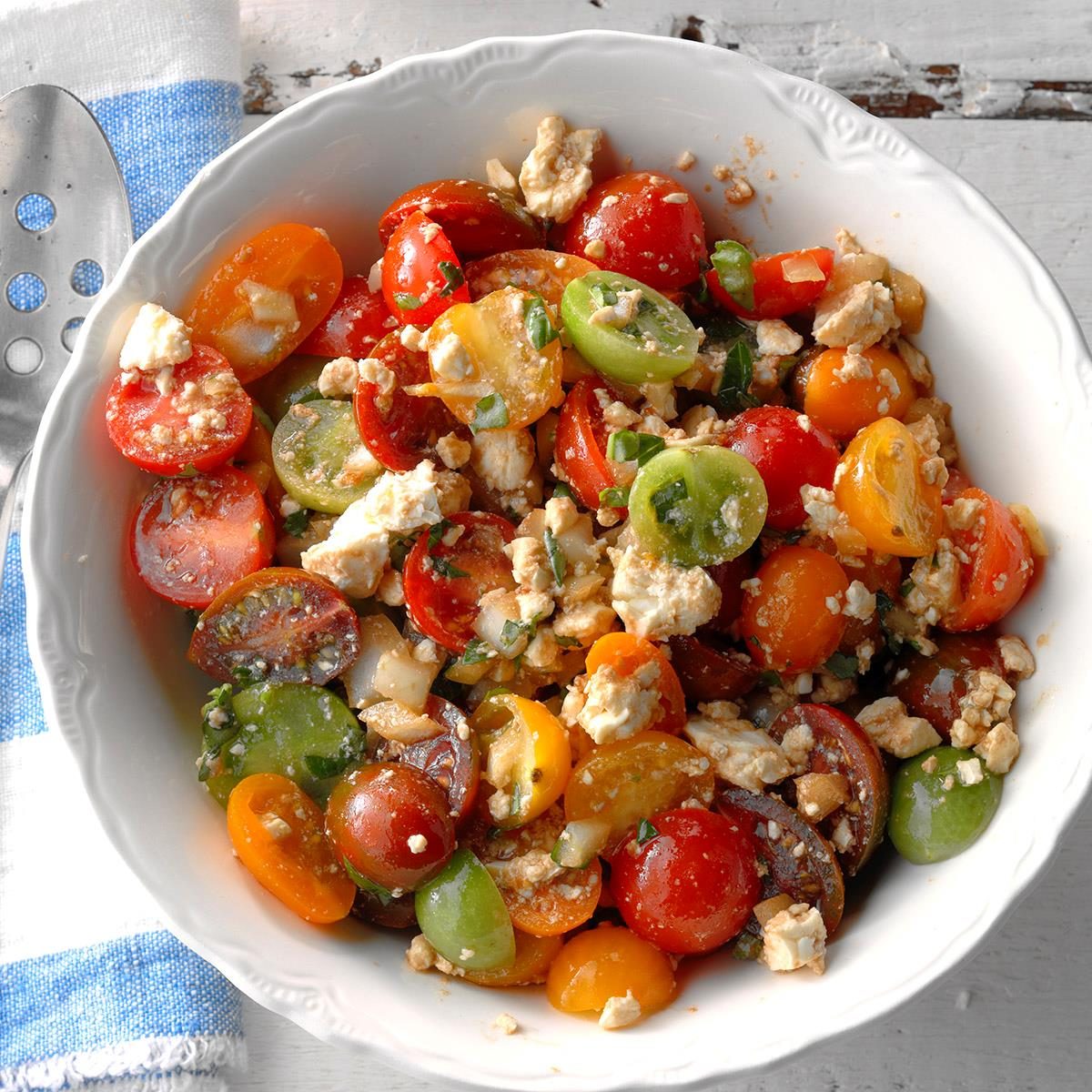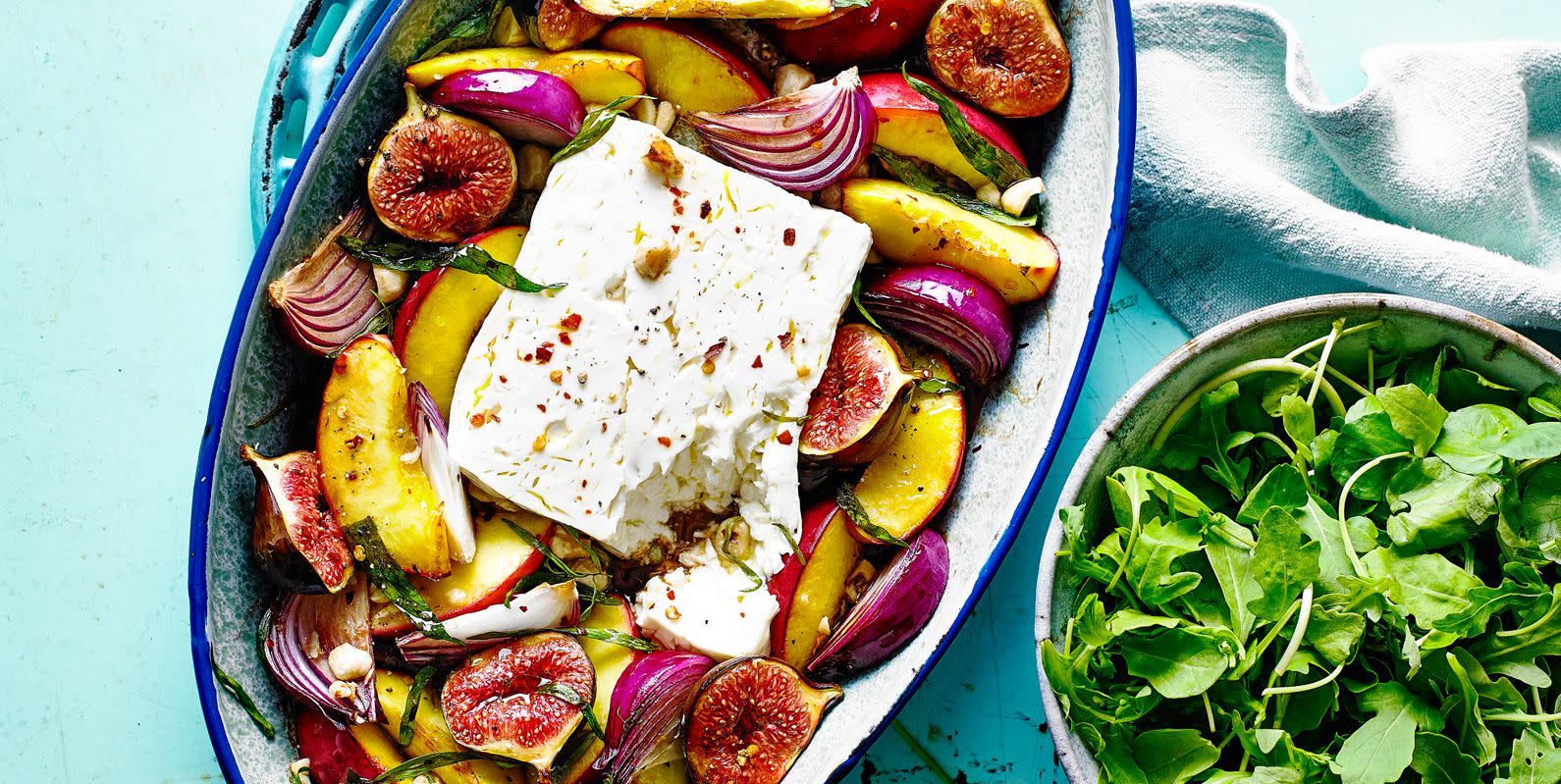Embark on a culinary adventure with feta cheese, a delectable and versatile ingredient that has captivated taste buds for centuries. Feta’s rich history, unique flavor profile, and diverse applications make it a culinary treasure, enjoyed in both savory and sweet creations.
From its humble beginnings in ancient Greece to its global popularity today, feta has woven its way into various cuisines, adding a touch of salty tang and creamy texture to dishes worldwide. Let’s delve into the world of feta recipes, exploring its versatility and discovering the endless possibilities it offers.
Feta Cheese Overview
Feta, a renowned cheese with a rich history, originated in Greece. Its production dates back to ancient times, with references to it found in Greek mythology and literature. This brined cheese, traditionally made from sheep’s milk or a blend of sheep’s and goat’s milk, holds a prominent place in Greek cuisine and has gained worldwide popularity.
Feta is distinguished by its unique characteristics. Its flavor profile ranges from tangy and salty to sharp and piquant, depending on the aging process. The texture is firm and crumbly, often described as “gritty” or “grainy.” The aging process, which can last anywhere from a few months to several years, plays a crucial role in developing Feta’s distinct flavor and texture.
Types of Feta Cheese
There are different types of Feta cheese, each with its own distinct characteristics:
- Traditional Greek Feta: Made from 100% sheep’s milk or a blend of sheep’s and goat’s milk, this type of Feta is produced in Greece and adheres to strict regulations regarding its production methods and quality standards.
- Non-Greek Feta: Feta cheese produced outside of Greece may use cow’s milk or a blend of cow’s, sheep’s, and goat’s milk. These variations often have a milder flavor compared to traditional Greek Feta.
- Flavored Feta: Feta cheese can be infused with various flavors, such as herbs, spices, or nuts, to create unique and flavorful variations.
Feta Recipes: Appetizers and Salads
Elevate your culinary experience with an array of delectable Feta-based appetizers and salads. From vibrant dips and spreads to refreshing Mediterranean-style salads, these recipes showcase the versatility and flavor of Feta cheese.
Feta-Infused Appetizers
Indulge in a symphony of flavors with these creative Feta-infused appetizers. Impress your guests with elegant canapés, tantalize their taste buds with creamy dips, and delight them with savory spreads.
- Feta Dip with Roasted Red Peppers: Blend Feta, roasted red peppers, olive oil, garlic, and herbs into a smooth, vibrant dip. Serve with pita chips, crackers, or vegetables.
- Feta-Stuffed Mushrooms: Fill mushroom caps with a mixture of Feta, spinach, sun-dried tomatoes, and Parmesan cheese. Bake until golden and serve as a hot appetizer.
- Feta and Prosciutto Skewers: Skewer Feta cubes, prosciutto slices, and cherry tomatoes. Drizzle with olive oil and balsamic vinegar. Grill or bake until the prosciutto is crispy.
- Feta and Watermelon Canapés: Top watermelon cubes with Feta crumbles, mint leaves, and a drizzle of honey. Serve as a refreshing summer appetizer.
Feta-Inspired Salads
Experience the vibrant flavors of the Mediterranean with these Feta-inspired salads. From classic Greek salad to refreshing cucumber-Feta salad, these dishes celebrate the simplicity and freshness of Feta cheese.
- Greek Salad: Combine diced cucumbers, tomatoes, onions, bell peppers, and Kalamata olives. Top with crumbled Feta, oregano, and a drizzle of olive oil and red wine vinegar.
- Cucumber-Feta Salad: Toss sliced cucumbers with Feta cubes, red onion, dill, and a dressing made with olive oil, lemon juice, and honey.
- Spinach and Feta Salad with Warm Bacon Dressing: Mix baby spinach, Feta, sliced almonds, and red onion. Drizzle with a warm bacon dressing made with bacon, olive oil, vinegar, and honey.
- Quinoa Salad with Feta and Roasted Vegetables: Cook quinoa and combine with roasted vegetables like broccoli, zucchini, and carrots. Add Feta, herbs, and a tangy dressing made with lemon juice, olive oil, and Dijon mustard.
Feta in Desserts and Pastries
Feta cheese is known for its salty and tangy flavor, which may seem like an unlikely addition to sweet treats and desserts. However, the unique taste of feta can add a delightful complexity and richness to various desserts and pastries.
Feta-filled phyllo dough treats, such as spanakopita and tiropita, are popular Greek pastries that showcase the harmonious blend of feta with spinach, herbs, and filo dough. The flaky layers of filo dough encase a savory filling of feta, creating a crispy and flavorful treat.
Feta-Infused Ice Cream
Feta-infused ice cream is a surprisingly delicious and refreshing dessert. The tanginess of feta complements the sweetness of the ice cream, creating a unique and balanced flavor profile. The ice cream can be made with a variety of flavors, such as honey, nuts, or fruit, to enhance the complexity of the dish.
Feta-Topped Baked Goods
Feta can also be used as a topping for various baked goods, adding a salty and tangy contrast to the sweetness of the pastry. For example, feta can be sprinkled on top of cookies, scones, or muffins before baking, resulting in a delightful combination of flavors and textures.
The techniques and flavor combinations used in feta-based desserts and pastries are what make these treats so special. The balance between the salty and tangy flavor of feta with the sweetness of the other ingredients creates a unique and memorable taste experience.
Additionally, the use of feta in these desserts adds a touch of sophistication and intrigue, making them perfect for special occasions or as a delightful surprise.
Feta as a Culinary Accompaniment
Feta’s versatility extends beyond its role as a standalone ingredient. It shines as a culinary companion, adding depth and complexity to a wide range of dishes. Its tangy, salty flavor and creamy texture make it an ideal garnish or accompaniment, elevating both savory and sweet creations.
Garnishing and Accompaniments
A sprinkle of crumbled Feta adds instant visual appeal and a burst of flavor to salads, grilled vegetables, and roasted meats. Its salty tanginess complements the sweetness of fruits, making it a delightful addition to fruit salads and desserts.
Marinades and Dressings
Feta’s tangy flavor and creamy texture lend themselves beautifully to marinades and dressings. A marinade made with Feta, olive oil, herbs, and spices infuses meats and vegetables with a savory, Mediterranean flair. A dressing made with Feta, yogurt, lemon juice, and fresh herbs creates a creamy, tangy sauce that complements salads, grilled meats, and fish.
Feta-Infused Oils
Feta-infused oils add a unique flavor dimension to various dishes. Combine crumbled Feta, olive oil, and herbs in a jar, and let it infuse for a few days. This flavorful oil can be drizzled over salads, pasta, grilled vegetables, or even used as a dipping sauce for bread.
Sandwiches, Burgers, and Pizzas
Feta’s salty, tangy flavor makes it a perfect addition to sandwiches, burgers, and pizzas. Crumbled Feta adds a creamy texture and a burst of flavor to grilled chicken or veggie burgers. It also pairs well with roasted vegetables, grilled meats, and fresh greens in sandwiches.
As for pizzas, a sprinkling of Feta over a tomato-based sauce creates a delicious and visually appealing combination.
Feta and Health
Feta cheese, a staple of Greek cuisine, offers a unique blend of flavors and health benefits. Its nutritional profile and potential health-promoting properties make it an excellent addition to a balanced diet.
Nutritional Value of Feta Cheese
Feta cheese is a rich source of essential nutrients, including:
- Calcium: A serving of feta provides a significant amount of calcium, essential for maintaining strong bones and teeth.
- Protein: Feta is a good source of high-quality protein, supporting muscle growth and repair.
- Vitamins: Feta contains vitamins A, B12, and K, which play crucial roles in vision, nerve function, and blood clotting, respectively.
- Minerals: Feta is rich in minerals like phosphorus, zinc, and magnesium, important for various bodily functions.
Potential Health Benefits of Consuming Feta Cheese
Consuming feta cheese may be associated with several potential health benefits, including:
- Bone Health: The high calcium content in feta supports bone mineralization and may reduce the risk of osteoporosis.
- Cardiovascular Health: Feta contains conjugated linoleic acid (CLA), a fatty acid linked to improved cholesterol levels and reduced risk of heart disease.
- Gut Health: Feta, like other fermented dairy products, may contain beneficial bacteria that support gut health and digestion.
- Immune Function: Feta provides vitamins and minerals that contribute to a healthy immune system, helping to protect against infections.
Enjoying Feta as Part of a Balanced Diet
To reap the health benefits of feta cheese, it’s important to consume it in moderation as part of a balanced diet. Feta’s high sodium content means that excessive consumption can contribute to high blood pressure. Incorporate feta into meals in small portions, such as sprinkling it on salads, adding it to sandwiches, or using it as a dip for vegetables.
Feta Around the World
Feta, the iconic Greek cheese, has transcended borders and become a culinary treasure enjoyed worldwide. From the sun-drenched shores of the Mediterranean to the vibrant markets of the Middle East, Feta’s versatility and distinct flavor have earned it a place in diverse cuisines.
Let’s embark on a culinary journey to explore how different cultures incorporate Feta into their culinary traditions.
Feta in Mediterranean Cuisine
In the Mediterranean, Feta is an indispensable ingredient, adding a salty tang to salads, pastries, and main courses. Greek salad, a refreshing medley of tomatoes, cucumbers, onions, and olives, is incomplete without crumbled Feta. Spanakopita, a savory spinach and Feta-filled pastry, is a beloved Greek dish.
Feta in Balkan Cuisine
In the Balkans, Feta’s tangy flavor complements grilled meats, stews, and börek, a flaky pastry filled with cheese, meat, or vegetables. Shopska salad, a Bulgarian classic, combines tomatoes, cucumbers, onions, and Feta, drizzled with a tangy vinaigrette.
Feta in Middle Eastern Cuisine
In the Middle East, Feta’s salty, tangy flavor adds a distinctive touch to dishes like fattoush, a salad featuring toasted pita bread, vegetables, and Feta. Labneh, a thick yogurt cheese, is often blended with Feta to create a creamy, flavorful dip.
Feta in European Cuisine
Feta’s influence extends beyond the Mediterranean and the Middle East. In Europe, Feta finds its way into various dishes. Danish Feta, a milder, creamier version of the Greek cheese, is often used in salads and sandwiches. In Germany, Feta adds a salty kick to Flammkuchen, a crispy flatbread topped with crème fraîche, onions, and bacon.
Summary

Our exploration of feta recipes has taken us on a culinary journey, revealing the diverse and captivating ways this cheese can transform simple ingredients into extraordinary dishes. Whether you’re a seasoned chef or a home cook seeking inspiration, feta’s versatility and unique flavor profile offer endless possibilities for creating memorable meals.
Experiment with feta in appetizers, main courses, salads, and even desserts, and discover the magic it brings to your culinary creations.
Answers to Common Questions
What is the best way to store feta cheese?
Feta cheese should be stored in its original brine or a mixture of water and salt to maintain its freshness and flavor. Keep it in an airtight container in the refrigerator for up to two months.
Can I use feta cheese in baking?
Yes, feta cheese can be used in baking. Its salty and tangy flavor adds a unique twist to pastries, breads, and cakes. Crumbled feta can be sprinkled on top of savory pastries, while whipped feta can be incorporated into cakes and muffins for a creamy and flavorful addition.
How do I make a simple feta dip?
To make a simple feta dip, combine crumbled feta cheese with Greek yogurt, olive oil, lemon juice, garlic, and herbs like oregano or thyme. Season with salt and pepper to taste. Serve with pita bread, crackers, or vegetables for a quick and easy appetizer or snack.

